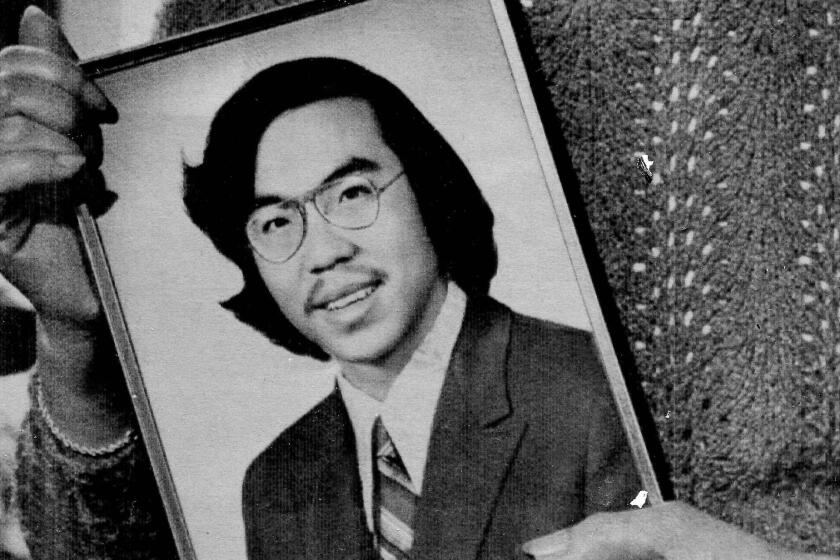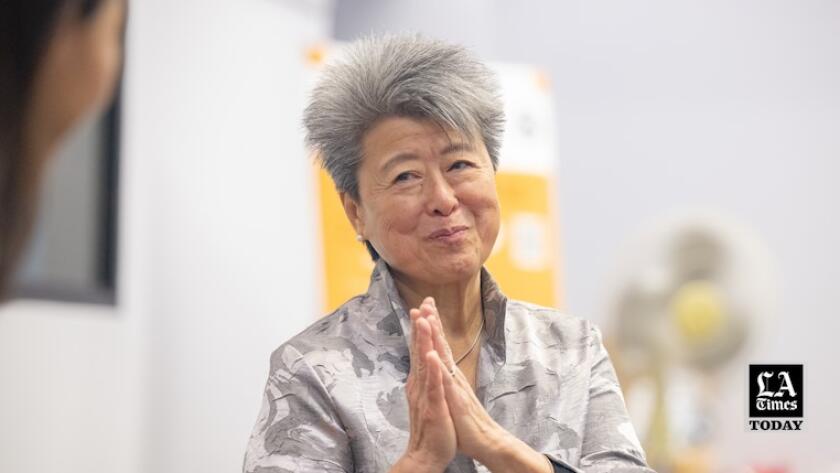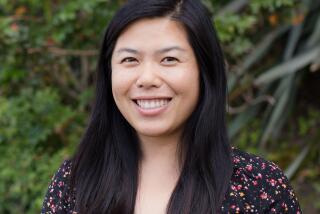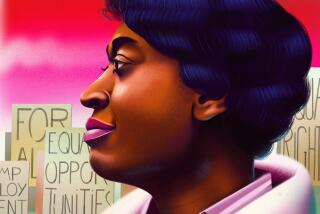How one woman fought bigotry and helped change the way Asian Americans see themselves
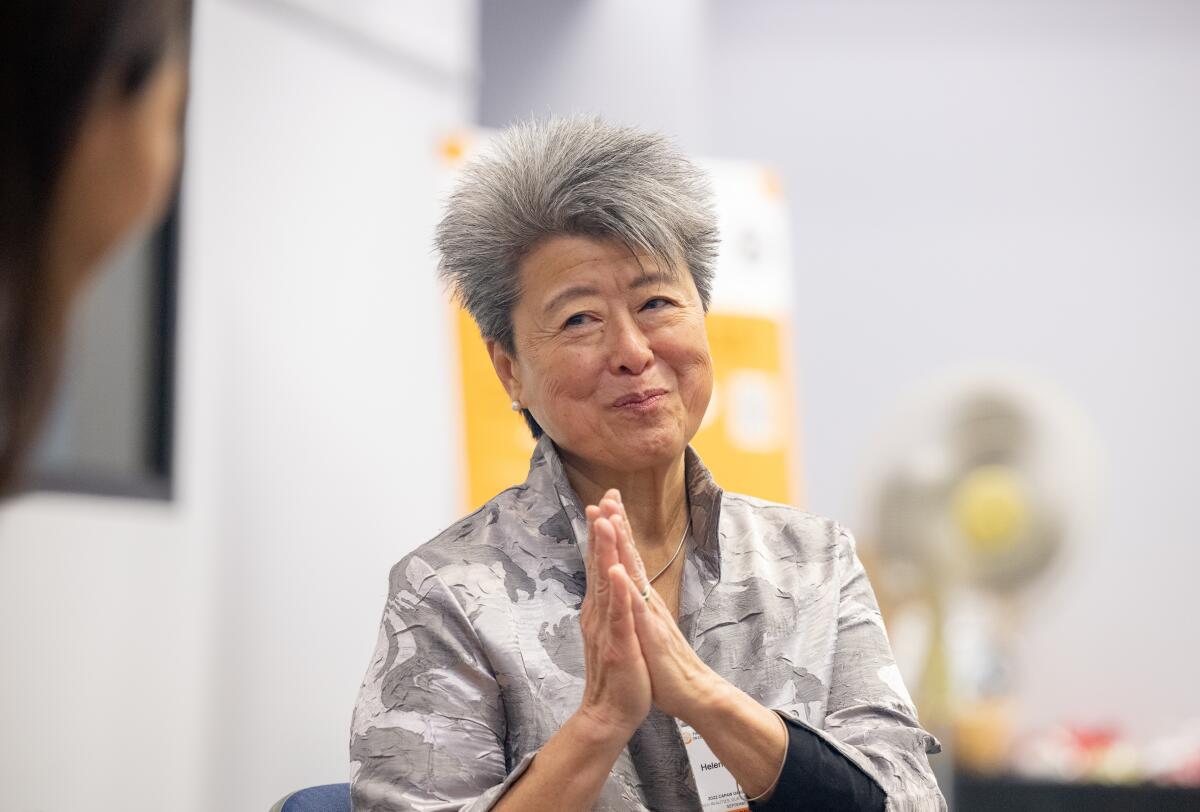
OAKLAND — She fought with her father to go to college.
She went on to become one of the first women to graduate from Princeton in 1973. While there, she successfully lobbied to start an Asian American Students Assn.
A few years later, she demanded that authorities in Detroit handle the slaying of a Chinese American man, Vincent Chin, as a hate crime. She succeeded. Later, her books and articles would showcase the violence and discrimination faced by Asian Americans.
It seems Helen Zia has always been fighting. And the reasons to fight never cease.
“Asian Americans have been slammed as cartoon characters,” Zia said. “We’ve been called gooks, geeks, geishas. Moving beyond racial slurs to communities of strength and influence is a battle that doesn’t die.”
Indeed, even after all the battles she has fought, current conditions present unusually fraught challenges.
“This time feels different,” Zia said at a leadership workshop in Oakland.
When people started blaming China for the COVID-19 pandemic, it seemed certain Asian Americans would feel blowback too.
“I see you nodding your heads,” she told the crowd. “You went, ‘Oh, s—.’”
No one laughed.
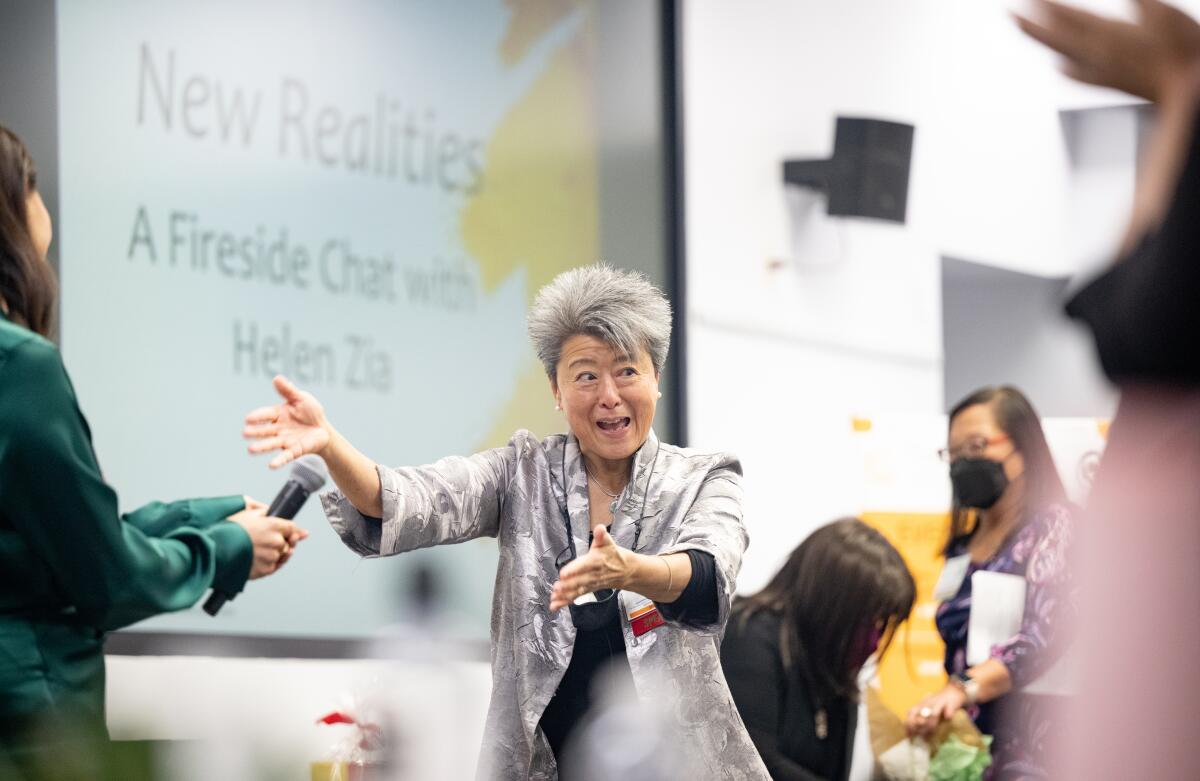
“Where we are today,” she continued, “is a consequence of so many things that we, some of us, have been predicting for some time.” Among those changes is the growing numbers of people of color, which some members of society find threatening.
Though hardly a household name to the general public, the 70-year-old activist and author is a trailblazer — to some, a legend — among those who care about Asian American issues and civil rights. Even now, the invitations for her to speak and teach come pouring in to her Oakland home.
“In many respects, when you know Helen, it’s not a surprise. It’s inevitable. It’s impressive. But it’s not a surprise,” said Robin Morgan, one of the founders of the 1970s women’s liberation movement and editor of the feminist quarterly Ms. when Zia served as executive editor from 1989 to 1992.
Known for her hard-hitting talk and fierce intelligence as well as her warmth, Zia speaks with such energy and conviction that she leaves her audiences inspired and often in awe.
“Most men or women might have given up by now,” said Mary Yu Danico, professor of sociology and director of the Asian American Transnational Research Initiative at Cal Poly Pomona. “Racism — bias against Asian Americans — it has flourished for a long time, and it still exists in public and in private. Helen could have gone on to do something lucrative or with less stress. But you continue to hear her reasoning and her passion day after day.”
Zia was an early proponent of what was once a novel idea: that Americans with roots in China, Japan, Vietnam and other Asian countries could unite as Asian Americans to organize and, when necessary, agitate. The group identity would expand to more parts of Asia, such as India, and later include Pacific Islanders. Some believe it’s not far-fetched to say that without Zia, May would not now be observed as Asian American and Pacific Islander Heritage Month.
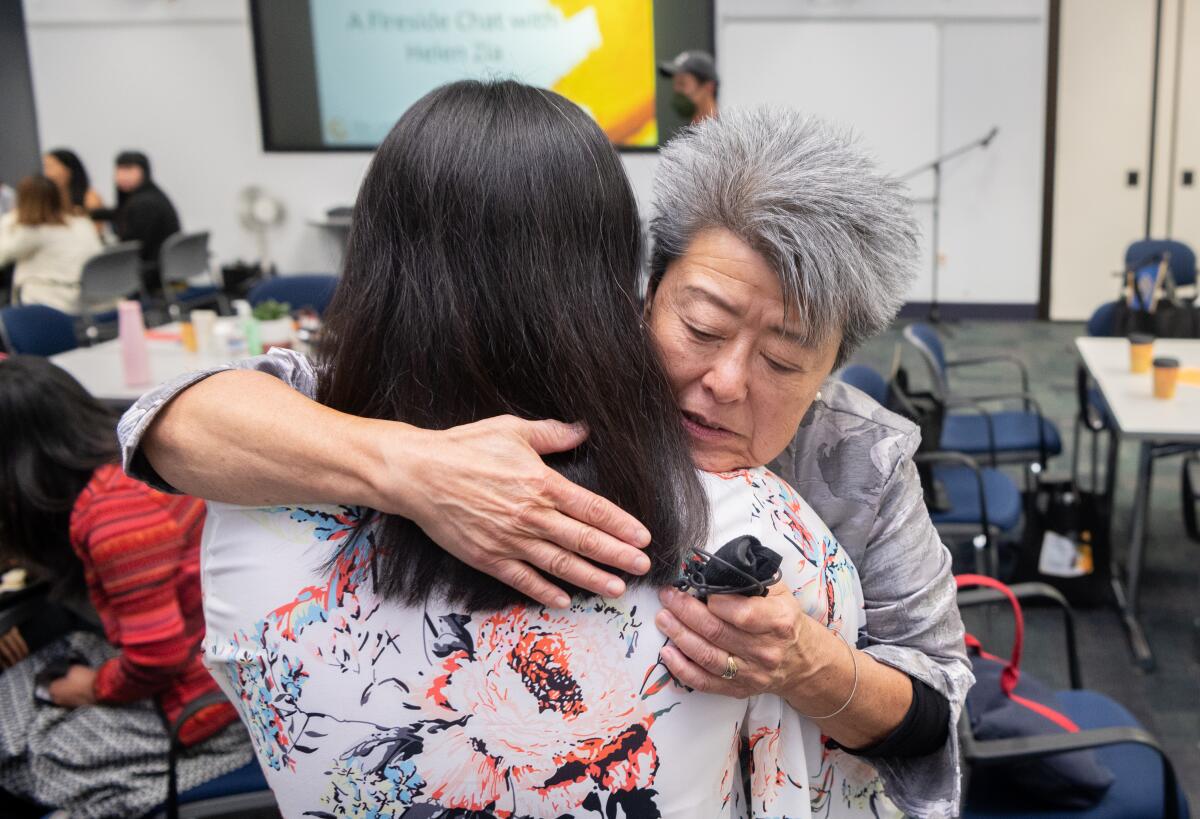
To her, the important thing is her work, not herself.
“I’m an example of speaking up,” she said. “Never a role model.”
But to many that is exactly what she is, and her life has been marked by a devotion to duty — duty she developed young.
Born in New Jersey to parents from Shanghai, Zia was 5 when she began helping in her parents’ floral novelty business, doing her share along with five siblings.
Her father was convinced that instead of giving flowers to new mothers, consumers might buy something more creative. The elder Zia combined blue and pink duckies with a lamp shade, or a carousel with a music box, both items sporting cups for holding blooms. He trained his kids how to carefully assemble them.
He was an educated man who wrote poetry, plays and a novel — and fiercely proud of his Chinese heritage. He taught his children to be the same. “Just remember,” he would say, “when Europeans were naked in caves, we were wearing silk.”
“In the homeland, he was at his top, going to a top school and excelling in literary subjects. Here in America, he really started over, experimenting to stay afloat,” Zia said. “He wasn’t defeated. He showed us not to feel defeat.”
Zia’s mom barely knew English, while her dad spoke with a heavy accent, making him a target for mockery and racism.
“The Chinese — we have always been regarded as perpetual foreigners,” younger brother Hoyt Zia recalled.
As the 1960s unfolded, the Zias lived in a mostly white New Jersey community near Philadelphia, but Hoyt and Helen Zia remember being increasingly exposed to a multiracial society and this prompted her interest in social justice campaigns.
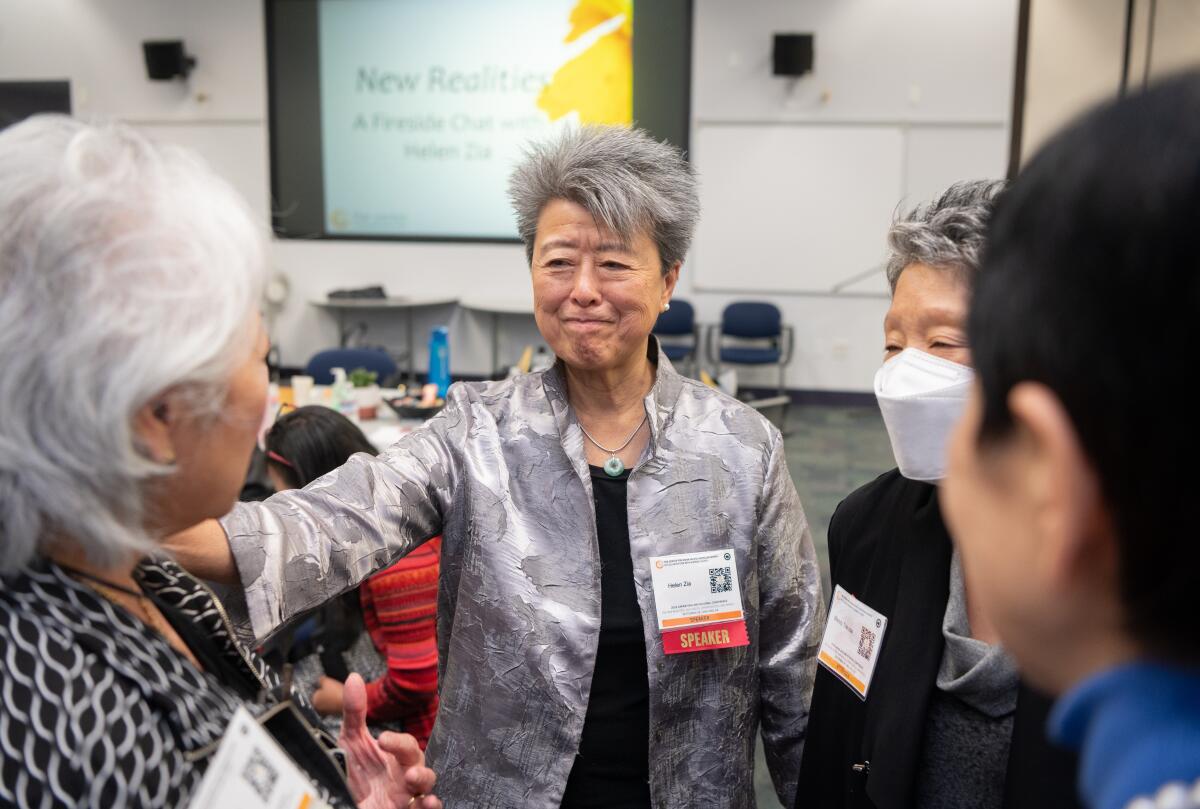
In “Asian American Dreams,” her groundbreaking book that’s part memoir, part social history, she recounts a life-changing incident in high school when she discussed civil rights with two friends — Rose, who was Black, and Julie, who was white:
“As I offered my thoughts, Rose abruptly turned to me and said, ‘Helen, you’ve got to decide if you’re black or white.’ Stunned, I was unable to say that I was neither, that I had an identity of my own. I didn’t know the words ‘Asian American.’ It was a concept yet to be articulated.”
Zia, who was her school’s valedictorian, was determined to learn more about outside communities. But her father forbade her from going elsewhere to pursue higher learning.
“She was accepted at every school she applied to and had a drag-out battle with him. He finally relented and let her pick Princeton just about 50 miles away, the closest of the schools she got in,” said Hoyt Zia, a retired attorney. “Dad said Chinese girls didn’t need an education, but my sister — she always had a fighting spirit. She knew she wouldn’t get anywhere without getting educated.”
After launching the Asian American Students Assn., a group that has grown into a thriving presence on hundreds of campuses, Zia found a voice protesting U.S. involvement in the Vietnam War while joining causes pushing for racial unity among low-income people of color.
Later, while enrolled in medical school in Greater Boston, she detoured — heading to Detroit in 1976 to work in construction because she believed women were underrepresented in the field.
Her move brought her to the same city as Vincent Chin, who in 1982 was beaten to death by two white men with a baseball bat. At the time, Japanese automakers were competing more and more with American companies, and the men blamed the 27-year-old Chin for the loss of their auto industry jobs.
Zia, who had added journalism to her repertoire, wrote about all aspects of the killing. Chin wasn’t Japanese but he was Asian, and for his killers that was enough. Her work galvanized Asian Americans in Michigan and across the country.
By 1987, when filmmakers released the documentary “Who Killed Vincent Chin?” the intensity of the Asian American movement rose to a new level — amassing unprecedented attention. Supporters marched on the streets with Zia, and in a first, the protesters included cooks and laundromat owners, along with engineers and lawyers, carrying signs demanding their civil rights.
Thus, a generation of activists was born. And she continues to draw new supporters.
“I had no idea that any of these events happened — that violence against Asians had blown up and continues to be out of control — until I tuned into a Zoom and heard her emotional voice sharing this history,” said Sue Chao, a store clerk from mainland China who relocated to Los Angeles in 2019. “I’ve been researching that history, and I see Helen Zia’s name a lot. Thanks to her, I now realize how our cultural reality is shaped by the past.”
But Zia doesn’t just recount history.
As the pandemic unfolded, Chao watched her speak online and saw how she would spotlight the news, such as the death of Vicha Ratanapakdee, 84, after he was assaulted — and the brutal attack on Xiao Zhen Xie, now 77, who remains at home, terrified to venture out alone. Both incidents occurred in San Francisco in 2021.
So what is Zia’s lasting superpower?
“I think what separates her is her badassness. She really is unapologetic in her activism,” said Danico, the Asian American studies professor. “Yet what really solidifies her legacy is her kindness — she is so humble. When you talk to her, you feel you’re the only one in front of her.”
Zia described her strategy for doing this work: “People don’t always react with empathy to others who aren’t like them. They view you as invisible or as hardly human. My passion is to highlight stories about those who are invisible.”
My passion is to highlight stories about those who are invisible.
— Helen Zia
Danico first met Zia at an Assn. for Asian American Studies gathering in 1998.
“I was fangirling on the inside, but Helen, she’s simply humble,” Danico recalled. “Whenever I tell her she’s my ‘shero’ — Helen says: ‘What are you talking about? You’re my shero.’ She brings people along with her.”
Not that the concept of a pan-Asian community is universally embraced. A 2022 study by the Pew Research Center into Asian identity found that “many participants felt that neither ‘Asian’ nor ‘Asian American’ truly captures how they view themselves and their identity. They argue that these labels are too broad or too ambiguous, as there are so many different groups included within these labels.”
Still, the concept Zia helped launch decades ago remains strong and she remains in demand at universities nationwide.
In 2016 at Cal State Northridge, Karen Loong listened transfixed as Zia appeared on screen, urging people to reconnect with their roots to understand why it’s important for immigrants to stand up for representation and their civil rights. The former paralegal had returned to school to delve into Asian American studies and hearing Zia “lit ... a fire in me,” she remembered.
“I realized I needed to stay in Asian American studies because of injustices that happened before me. It made me think that we shouldn’t wait until we’re adults to find out who we really are,” Loong said. “Anyone can be an example to help the community improve itself.”
And so the fights continue. Last month Zia and her close supporters went to Washington, D.C., and, standing on the steps of Capitol Hill, announced the formation of the Vincent Chin Institute to help victims of anti-Asian hate crimes — especially if they live in areas not heavily populated by Asians.
As a young child, I saw how this country treated immigrants, even before two white men attacked Chin with a baseball bat.
As is often the case with Zia, the past informs the present: “The epicenter for organizing around Vincent Chin was Detroit and other locales in the Midwest at a time when very few pan-Asian organizations of any kind existed, and then only in California and New York. ... But what happens when people are hurt in Albuquerque, N.M., or in rural America?
“We need something in place to transport help and connect people to different systems such as legal, health, mental health, domestic violence, LGBTQ and media communications,” she said.
Publicly, Zia has also been a force for LGBTQ+ rights, not hesitating to spotlight the intersection of being a lesbian with Chinese American roots. She and her wife, Lia Shigemura, tied the knot in 2008 at San Francisco’s City Hall after California began issuing same-sex marriage licenses.
One morning in Oakland, where Zia has made her home for more than two decades, the crowd at a conference hosted by the Center for Asian Pacific American Women wouldn’t stop clapping — even before she spoke — for their keynote speaker.
The mood in the room, somber as observers listened to her life story, turned electric — with most spectators recording her on their phones, scribbling notes or asking for a photo with the guest of honor afterward, including moderator Gia Vang, a TV news anchor at NBC Bay Area.
Initially, when asked to appear with Zia, Vang remembered thinking: “Wow. The Helen Zia, someone at the forefront of all the issues we care about. She’s a real-life person advocating for us, not a myth.”
One woman working with Asian elders asked about the health of Zia’s parents. Two others wanted her autograph. Zia was quick to respond, whipping out a fine-point pen, joking: “And what do you do? It’s probably me who needs your signature on my book.”
“Always have something to offer. Never think you’re alone. It’s one of the things that keeps me going,” Zia said.
Then she was off to San Francisco — to the next scheduled talk, another chance to educate, to inspire others to action.
Watch L.A. Times Today at 7 p.m. on Spectrum News 1 on Channel 1 or live stream on the Spectrum News App. Palos Verdes Peninsula and Orange County viewers can watch on Cox Systems on channel 99.
More to Read
Sign up for Essential California
The most important California stories and recommendations in your inbox every morning.
You may occasionally receive promotional content from the Los Angeles Times.

